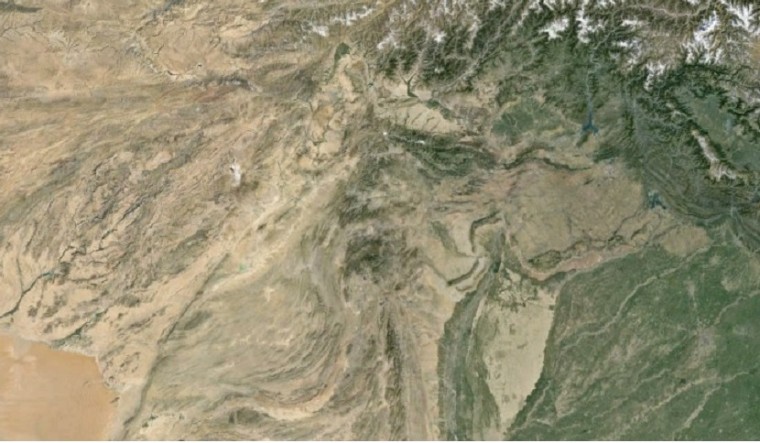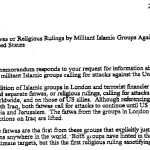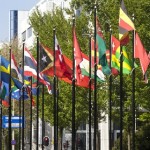GERMAN MUSLIMS TRAVELING TO THE TRIBAL AREAS: EN ROUTE TO THE JIHAD
GERMAN MUSLIMS TRAVELING TO THE TRIBAL AREAS: EN ROUTE TO THE JIHAD
By Ronald Sandee
In 2008, a group of Muslims in Hamburg began discussing support for their fellow Muslims in need and emigrating to wage jihad. Now known as the “Hamburg travel group,” it is assessed the group consisted of eight jihadis.
Members of the group would meet in a mosque in Hamburg. Over time, through their religious studies the group became convinced Sharia offers the only proper framework for governance. Further, according to Syrian-German group member Rami Makanesi, they were convinced violent Jihad is an integral part of Islam as 20 percent of the Koran deals with the topic of Jihad.
Eventually, Makanesi would tell authorities the story of his trip to Waziristan. His account offers important insights of how jihadi facilitation networks operate in Southwest Asia.
Passage to Waziristan
As the Hamburg group began to meet more regularly, an individual known as Asadullah Muslih arrived in Hamburg late in 2008. Asadullah spoke both at the home a group member and in a Hamburg mosque.
Through their interactions with Asadullah members of the Hamburg travel group became convinced the time had come to travel to Peshawar.
As it was believed a group of more than 10 travelers (including women) would attract too much attention, and would probably be detected by authorities, the Hamburg travel group formulated four different sets of travel plans.
The first plan entailed a direct flight to Peshawar. The second plan was to travel to Vienna, then to Brussels, and on to Karachi. The third plan entailed travel to Peshawar via Frankfurt. The fourth plan called for travel through Iran.
Rami and his fellow traveler Namaan Meziche followed the fourth plan. From Vienna, they traveled to Tehran, then on to Zahedan. From Zahedan, they traveled to Quetta, eventually reaching Mir Ali in Waziristan.
Asadullah had left Hamburg early in February 2009 to make arrangements for the group to join him at his house in Peshawar. Late in March, members of the Hamburg travel group embarked on their journeys, with Makanesi and Meziche departing last.
Makanesi and Meziche drove from Hamburg to Vienna. In Vienna, they paid cash for airline tickets to Tehran priced between €1,500-1,700. Both men were traveling without their wives.
Once in Tehran they rented a motel room and called their facilitator Asadullah in Peshawar, who told them that he could not help at that time. They called him again two days later, but he still had no time to help them.
After about a week they called one more time. Asadullah gave them the phone number of a certain Dr. Mahmoud in Zahedan. Asadullah advised they should travel to Zahedan. How to get there was their problem, but they had two options: Via bus, or by taking an internal flight from Tehran to Zahedan that would costs around $20US.
Makanesi and Meziche took the bus to Zahedan.
Upon their arrival in Zahedan they took a cab and called Dr. Mahmoud to gather directions. Makanesi said, “we gave the cellphone to the cabdriver so he could talk with Dr. Mahmoud and get instructions where to drive.”
As Dr. Mahmoud only spoke Farsi, the travelers’ communications with Dr. Mahmoud, whom they stayed with for several days, was limited to a few words and hand gestures.
Dr. Mahmoud took their documents and money. “He told us we would get it back later,” Makanesi said.
Dr. Mahmoud is not a real doctor, according to Makanesi. He was in his mid-30s, had a strongly build, and is between 1.85 and 1.90 meters tall.
He provided the travelers Pakistani clothes and Turkmen refugee passes, which bore pictures of them taken by Dr. Mahmoud using his cellphone. He instructed them to say they were Turkmen when stopped. Makanesi was carrying the ID furnished by Dr. Mahmoud when he was arrested by ISI operatives in Pakistan.
Crossing from Iran into Pakistani territory without papers was not difficult. The two travelers were picked up at Dr. Mahmoud’s house and driven across the border. According to Makanesi, they arrived in Pakistan faster than travelers crossing the border with legal papers as those people had to stand in line.
A few hundred meters from the border post, the two travelers arrived at a house, in which they would spend a night. The following day, Makanesi and Meziche were taken to the nearest bus station. They took the bus to Quetta, and were accompanied by a local guide.
At police checkpoints the two “white faces” were hidden by passengers. Police boarded the bus only once, and they inspected all IDs but those of Makanesi and Meziche.
The two were instructed to remain on the bus when it arrived in Quetta. The bus drove to a garage. At the garage, Makanesi and Meziche were picked up and taken to a safe house.
They tried to call Asadullah using one of the five numbers they had for him. They did not know he had been detained by ISI and was being interrogated.
As they were unable to reach their facilitator, their local contact arranged for them to travel to Waziristan instead of going to Peshawar. After a twenty-hour bus trip to Bannu, they were loaded into a smaller bus for a one-hour drive to Mir Ali. Despite encountering multiple checkpoints along the way, the travelers made it to their destination.
In Mir Ali, they were taken to a guesthouse. The guesthouse operator asked the travelers which group they wanted to reach. Both Makanesi and Meziche advised they wanted to join “Abu Yahya al-Libi’s Group,” which was part of al-Qa’ida.
Although local men said they would not be able to join that group at the moment, a letter was sent to al-Qa’ida to inform members of the travelers’ interests. A week later, the two were driven to an al-Qa’ida guesthouse located two to three hours away from Mir Ali.
At the al-Qa’ida guesthouse, the travelers spoke with a Saudi man who knew of Dr. Mahmoud in Zahedan. The Saudi explained that Dr. Mahmoud was working with the Uzbeks (Islamic Movement of Uzbekistan, IMU). Further, they should consider that their money and papers (including passports) were lost.
The travelers were told al-Qa’ida could not accept them as their passage to Waziristan had been facilitated by the Uzbeks. Apparently, al-Qa’ida’s relationship with the Uzbeks was tenuous at that point, and al-Qa’ida did not want to make things worse by recruiting jihadis whose travels were facilitated by IMU operatives.
From the al-Qa’ida safe house near Mir Ali, the two were driven to Makin in South Waziristan. In Makin, they were questioned by associates of the IMU. Meziche made it clear he did not want to stay with them, and was driven back to Mir Ali by the driver who had carried the pair to Makin.
Makanesi stayed and met a few members of the travel group who were driven to Waziristan from Peshawar by a neighbor of Asadullah Muslih following his arrest. The travelers were soon taken to an area near Wana where the IMU’s headquarters was located.
After three weeks of travel Makanesi had arrived in the jihad theater.
Part II will cover Rami Makanesi’s account of his yearlong stay in Waziristan.




